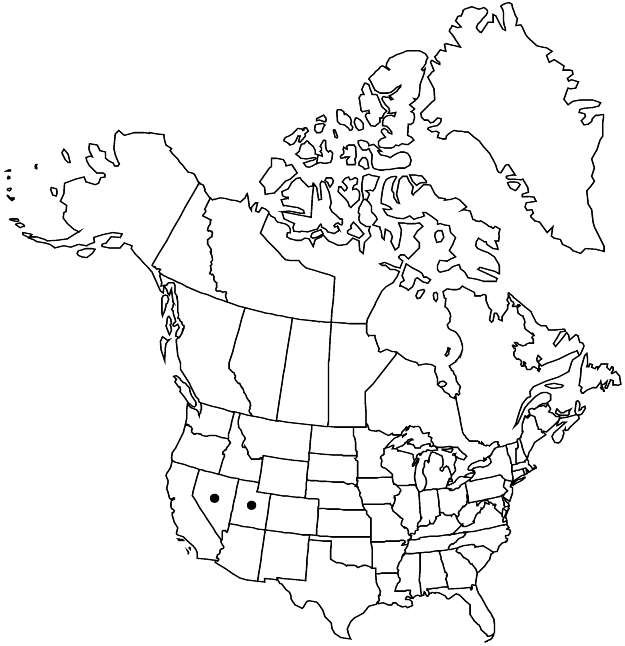Eriogonum howellianum
Phytologia 25: 204. 1973.
Herbs, erect to spreading, annual, 0.5–3 dm, glandular, greenish or reddish green. Stems: caudex absent; aerial flowering-stems erect, solid, not fistulose, 0.3–1 dm, glandular. Leaves basal; petiole 0.5–4 cm, glabrous or sparsely pilose; blade broadly elliptic to oval, 0.7–2.5 × 0.7–2.5 cm, pilose-hirsutulous, rarely slightly glandular and green on both surfaces, margins entire. Inflorescences cymose, open, spreading, 5–25 × 5–35 cm; branches not fistulose, glandular; bracts 3, scalelike, 1–2 × 0.5–1.5 (–2) mm. Peduncles absent or ascending to erect, straight or curved, slender, 0.2–0.5 cm at proximal nodes, 0.01–0.1 cm distally, proximal 1/2 sparsely glandular. Involucres turbinate-campanulate, 1.3–2 × 1–2 mm, glabrous; teeth (4–) 5, erect, 0.5–0.8 mm. Flowers 1–1.5 (–2) mm; perianth yellow with reddish midribs to entirely reddish, densely pilose; tepals monomorphic, lanceolate; stamens exserted, 1–1.5 mm; filaments glabrous. Achenes dull brown, 3-gonous, 1.5–1.8 mm, glabrous.
Phenology: Flowering Jun–Sep.
Habitat: Sandy to gravelly, often volcanic slopes, saltbush, greasewood, and sagebrush communities, pinyon-juniper woodlands
Elevation: (700-)1200-2100 m
Discussion
Eriogonum howellianum is encountered infrequently in widely scattered locations in southern Nevada (Clark, Lincoln, Nye, and White Pine counties) and west-central Utah (Juab, Millard, and Tooele counties). A disjunct population occurs on Pilot Peak in extreme eastern Elko County, Nevada. This species is rarely common. The name E. glandulosum was long misapplied to these plants.
Selected References
None.
Lower Taxa
"dm" is not declared as a valid unit of measurement for this property.

